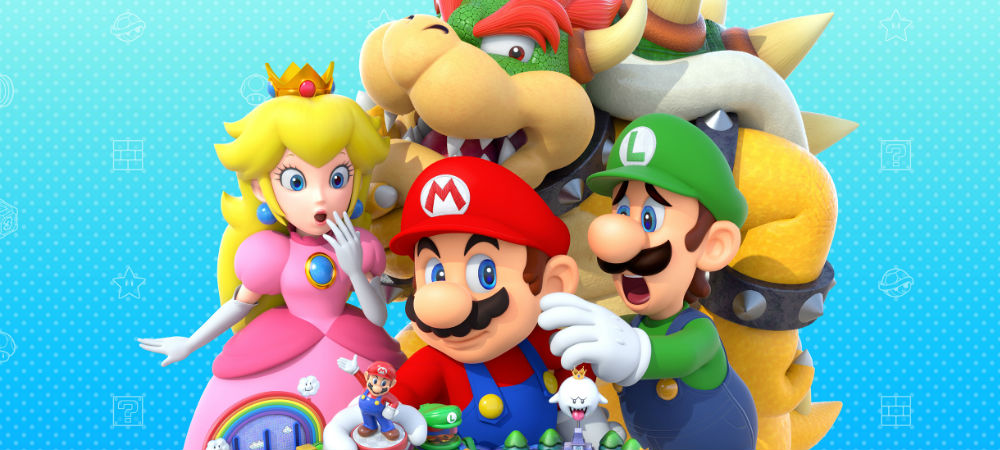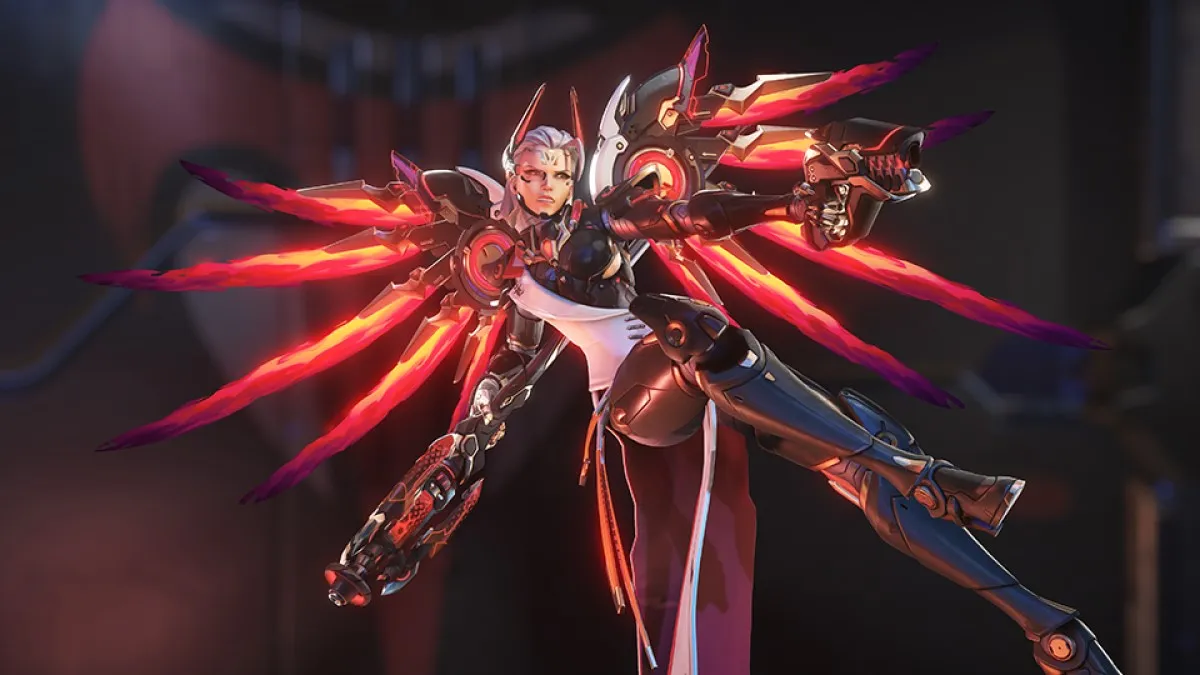Not the Narnia of Partias
I haven’t enjoyed the past few console editions of Mario Party. I felt like 8 was rushed to the Wii as an excuse to show off the technology, and it ended up being a generic waggle-fest that was a stark drop in quality compared to 7.
I never could have predicted that 9 would be even worse, introducing the new vehicular-based progression system (also known as “the car”), which tied every player to each other and forced them to ride along together on maps.
Mario Party 10 on the Wii U keeps that same format sadly, but improves upon a few other aspects of the experience. It’s just not enough to return the franchise to its former glory.

Mario Party 10 (Wii U)
Developer: Nd Cube
Publisher: Nintendo
Released: March 20, 2015
MSRP: $49.99 (standard game) / $59.99 (with Mario amiibo)
If you’ve played a party game before, you’ll have the general gist of Mario Party 10. This time there’s a lot of uncertainty as to what control schemes are supported, so I’ll break it down — Wiimotes. Yep, just Wiimotes. You don’t need Motion+, you don’t need any Classic Controllers (including the new Pro), and you don’t need anything other than Wiimotes and the occasional GamePad depending on the mode.
What you’ll immediately notice about 10 is the stark improvement in the visual department. The sharper and more vibrant engine makes the game feel more alive — it’s a huge upgrade from 9, which was dated upon arrival. Everything from Yoshi’s bold green hues to Donkey Kong’s amazing hair is crafted with care, and you’ll notice the difference everywhere from the map screen to the minigames themselves.
Sadly, developer Nd Cube (who took over for the now defunct Hudson), is still stuck on the vehicular based concept from the last game. Every single time you play the core “Mario Party” gametype, on every map, every round, you’ll progress in a shared vehicle that goes from point A to point B, with everyone facing the same exact challenges and the same boss fight at the end. The idea was divisive in Mario Party 9, and I expect the same thing here.
Personally, I’m a little more used to the mechanic, but it still severely limits the longevity of the game as a whole. If everyone is sharing the same rolls and movement, rounds are extremely dull as there is very little choice on any given player turn. For instance, in the past it was key to see where others were going, and either split up or chase them down individually. Even in the latter situation you’d get to experience all the trials and tribulations of the board with them — but in the vehicle, they may pass over all the “cool stuff” leaving you with tiresome rolls and nothing to show for it.

The other limitation is that every game on every board is estimated at roughly 30 minutes. There’s no modification of turns like in the pre-vehicle games, so even if you wanted to have an hours-long session or a short 10-turn round, you couldn’t — you’re at the mercy of the car. Right now there are a scant five levels on offer — Mushroom Park, Haunted Trail, Whimsical Waters, Airship Central, and Chaos Castle. I haven’t found a secret stage yet despite playing all of them.
Having said all that, the minigame quality in general is markedly better than that in 8 or 9. At this point Nd Cube seems to be more at ease with the Wiimote technology, offering up a variety of different activities that aren’t just waggle-fests. It’s not truly innovative since only a small handful of Bowser games use the GamePad, but I’m happy with the variety on display with Mario Party 10. There are lots of traditional sideways NES style games, single-button games that actually rely on timing, and there’s a good balance of easy to pick up bashes that require input rather than luck.
One of the other core modes that does shake things up in a big way is Bowser Party. This one is five players, with four using Wiimotes in the traditional manner, and Bowser on the coveted GamePad. The concept is to have “Team Mario” run away from Bowser while the Koopa King chases them down, rolling multiple dice after the entire team has had their turn. If he catches them, he gets an opportunity to decrease their health (by way of “hearts”) before they get to the end of the board and win the game.
While the idea is fun, I ultimately had mixed results. Some games are skewed heavily towards Bowser, and some are skewed towards the team. While the majority of them are balanced, I had a string of bad luck as Bowser once with terrible rolls that didn’t let me catch up for four turns in a row, and when I did, my two subsequent games were luck-based or favored Team Mario.

As a result, I never even interacted with them for half the game through no fault of my own. I know there’s always going to be an element of “Mario Party luck,” but that’s a little over-the-top. In another game things went exactly the opposite, as Bowser was able to catch up almost every turn. There’s even an in-game challenge for catching and killing the entire team on the first go. The ending is also anti-climatic as heck, since the final confrontation isn’t a boss fight, but a “find the star” micro-game that lets Bowser hide it with one of three enemies, and players take turns finding it.
As you can probably tell, Bowser Party also uses the vehicle. To add insult to injury, you can only use three maps in this mode as opposed to all five. It’s odd, as the boards are only tuned in a minor fashion to accommodate extra Bowser-only features; they aren’t fundamentally redone in any significant fashion. There’s absolutely no reason why all of the maps couldn’t be used in Bowser mode, or why there couldn’t be an exclusive map for it. It’s enjoyable particularly because it allows a fifth player to get in on the action, but there’s a lot of room for improvement if there’s a Mario Party 11.
Now onto the last mode, and for some, the most anticipated: amiibo Party. This one features a smaller board with a more traditional style of “trade 20 coins for one star, the person with the most stars wins.” Except here, the idea is to facilitate huddled up party play, where everyone is gathered around the GamePad — it’s also stuck at a hard 10 turns to get people in and out faster. As a nice touch you can use the Bowser amiibo to unlock a mini Bowser mode within the system, and every player gets “tokens” that function like old school power-ups in earlier Mario Party games that are much more interesting than the other modes.

I’m torn on amiibo Party as a whole though. While it’s nice to have a classic mode in tow, the maps are small. Like, very small, to the point where a dice bonus can nearly get you around the entire board in one turn. You can change the theme and modify a few of the on-board minigames by using an amiibo (for instance, Rosalina changes it to a galactic theme), but the boards themselves remain tiny. With maps that were even a little bit bigger, this could have been a major game-changer and the bonafide side-core mode for people who don’t like the vehicle.
There’s also the interesting little gimmick of having to put down the amiibo to roll, and place it back on the GamePad to “acquire” an item. It’s a little thing and one I actually don’t mind doing, but I’m sure a lot of people will find it annoying to have to group up on top of the GamePad. The main idea of keeping your customized amiibo from game to game or house to house is neat.
Thankfully the extra minigames (accessed by a separate main menu) elevate everything by quite a bit. In addition to getting daily rewards for supported amiibo, you can also earn extra currency by tapping any amiibo to the GamePad on a daily basis, once per day. The bonus games are pretty killer, including Badminton Bash (1-4 players), Jewel Drop (1-2), solo Bowser Jr. challenges, the typical minigame-only tournament setup, and single-player Bowser minigame face-offs.

The former two are easily my favorite, as Badminton is basically a mini-Mario Tennis. There are no real options and there’s only one court, but it’s fun nonetheless. Jewel Drop deserves a special shoutout, as it’s a modified match-four version of Puzzle Fighter, Puyo Pop, or whatever other genre staple you want to compare it to. It only supports two players but the level of depth involved is insane, and I ended up playing for hours on end once without realizing how much time had passed.
There is a “Toad Shop” that lets you buy the staple two extra characters and CPU difficulty, on top of extra cosmetic items like new cars, music, and art. If you’re the type of person that doesn’t care about fluff though you’ll exhaust Toad’s inventory in just one day of play, especially if you’re keen to use the amiibo as bonus points.
Mario Party 10 has an admirable bundle of minigames and sidegames, but the lack of interesting boards and half-measure amiibo Party mode hurt the overall package. There is simply not enough meat on the core game modes, seemingly in favor of adding in a hodgepodge of concepts that are isolated from one another. It’s time to give up the vehicle concept, Nd Cube, as it inherently limits the sprawling nature of the maps we once played for years on end.
[This review is based on a retail build of the game provided by the publisher. All of the current Mario Party 10 amiibo were also provided.]













Published: Mar 16, 2015 10:00 am